Have you had pahari kidney beans (rajma), royal apples or potatoes from Harsil in Uttarakhand? Do you know what these famous (and delicious) three have in common? They were introduced to Harsil almost 200 years ago by a Frederick Wilson also known as Hulseyn Saheb by the locals, Pahari Wilson by the British and the Raja of Harsil in books. This man of multiple names and titles was a deserter of the East India Company army and escaped to the Harsil valley near Gangotri in Uttarakhand. Pahari Wilson’s story was fascinating and we had to check it out for ourselves. What was so special about Harsil and why did he chose this as his base? A land so far from civilization (more so in the 19th century) and inaccessible for almost six months in the year due to heavy snow.
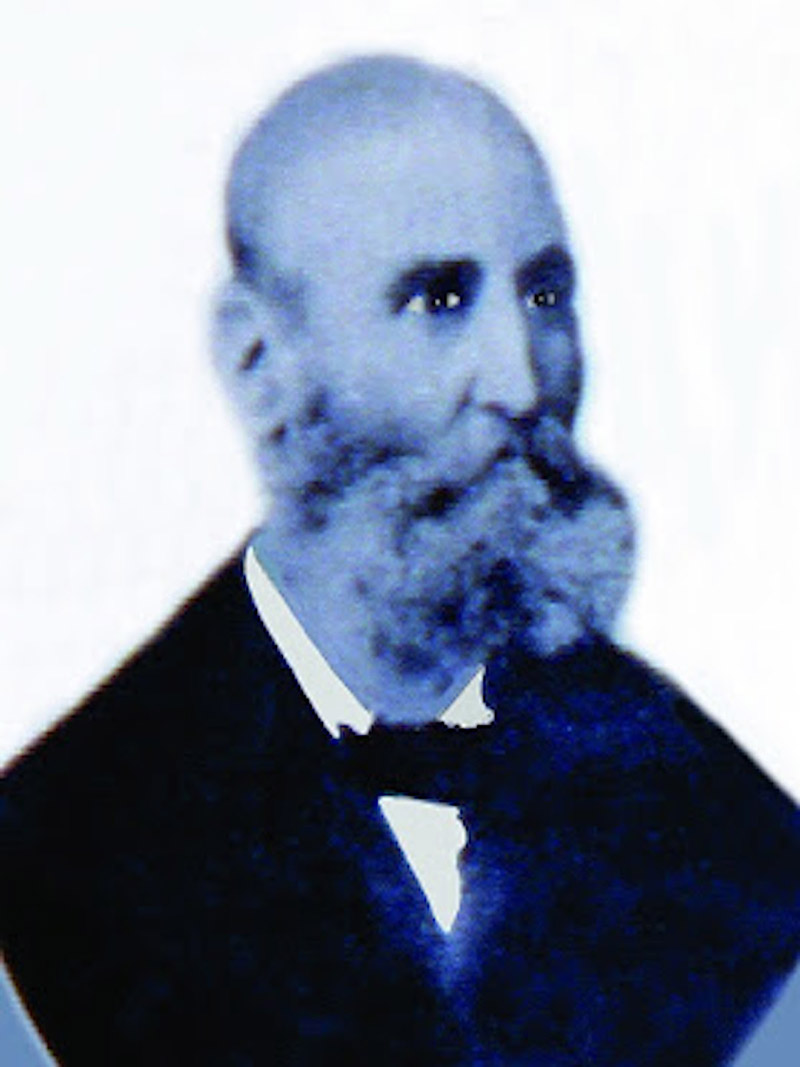
Pahari Wilson
Source: Raja-of-Harsil.com
Besides being an astute businessman, engineer and explorer, Pahari Wilson was also an ace hunter. He hunted birds and animals native to the region for meat, fur, musk deer pods etc. and also studied and documented their behavior. He married twice, both were local girls from Mukhba, a small village near Harsil. His first wife was Raimata and when she couldn’t bear him any children he married her aunt, Sungrami (nick named Gulabi) who was mother to his sons.
Hulseyn (locals couldn’t pronounce Wilson) Saheb also came up with the brilliant idea of supplying deodar (Himalayan cedar) to the British as they went about building the rail network across North India. For this, he felled ancient forests and stripped mountains barren. He floated the logs down the Bhagirathi river to a saw mill in Haridwar. This demand for lumber made him the Raja of Harsil, one of the richest and most powerful men even richer than the then Raja of Tehri. He also minted his own currency for paying his employees and for locals to buy and sell in.
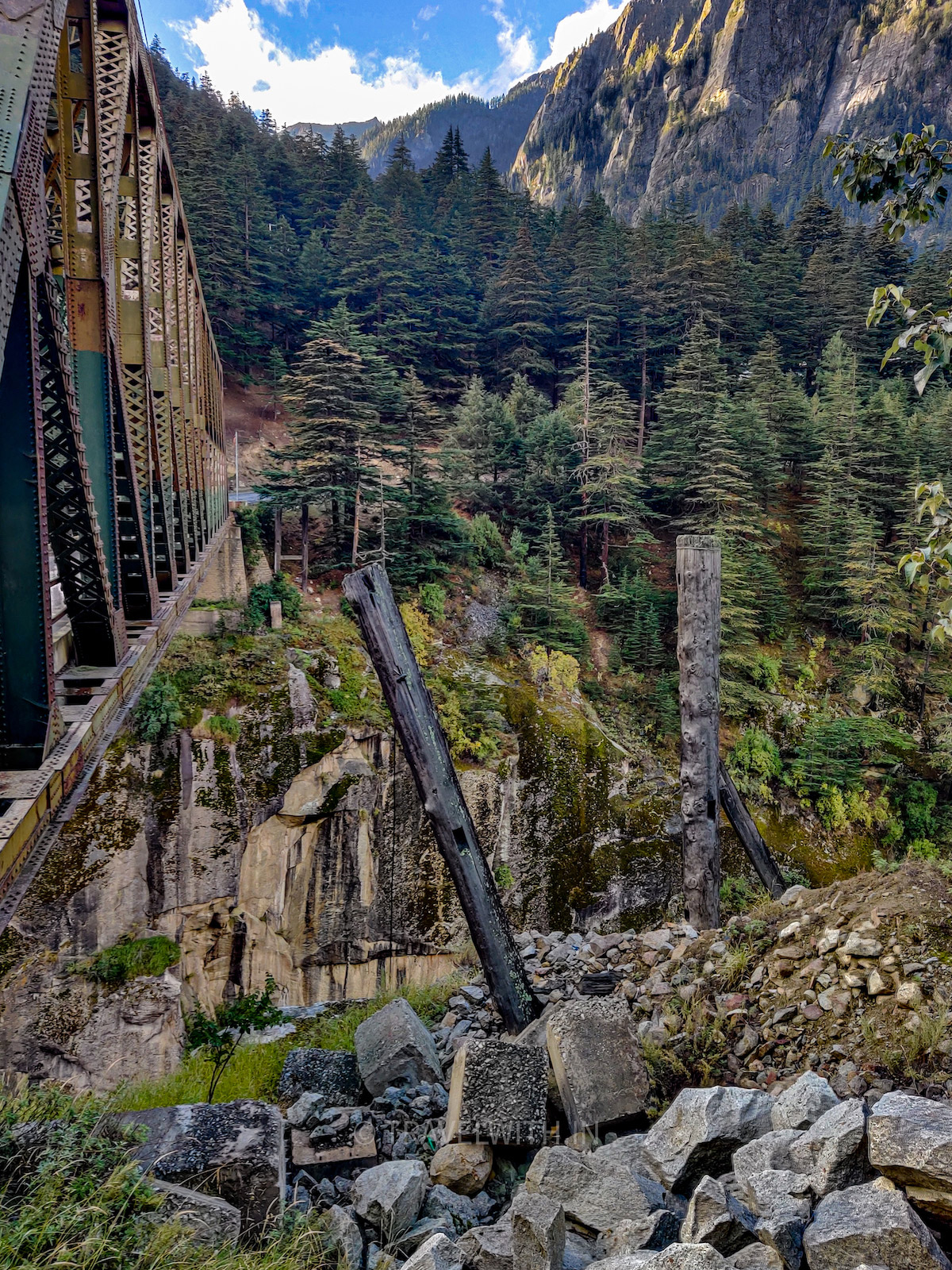
Remnant of a wooden bridge made by Pahari Wilson
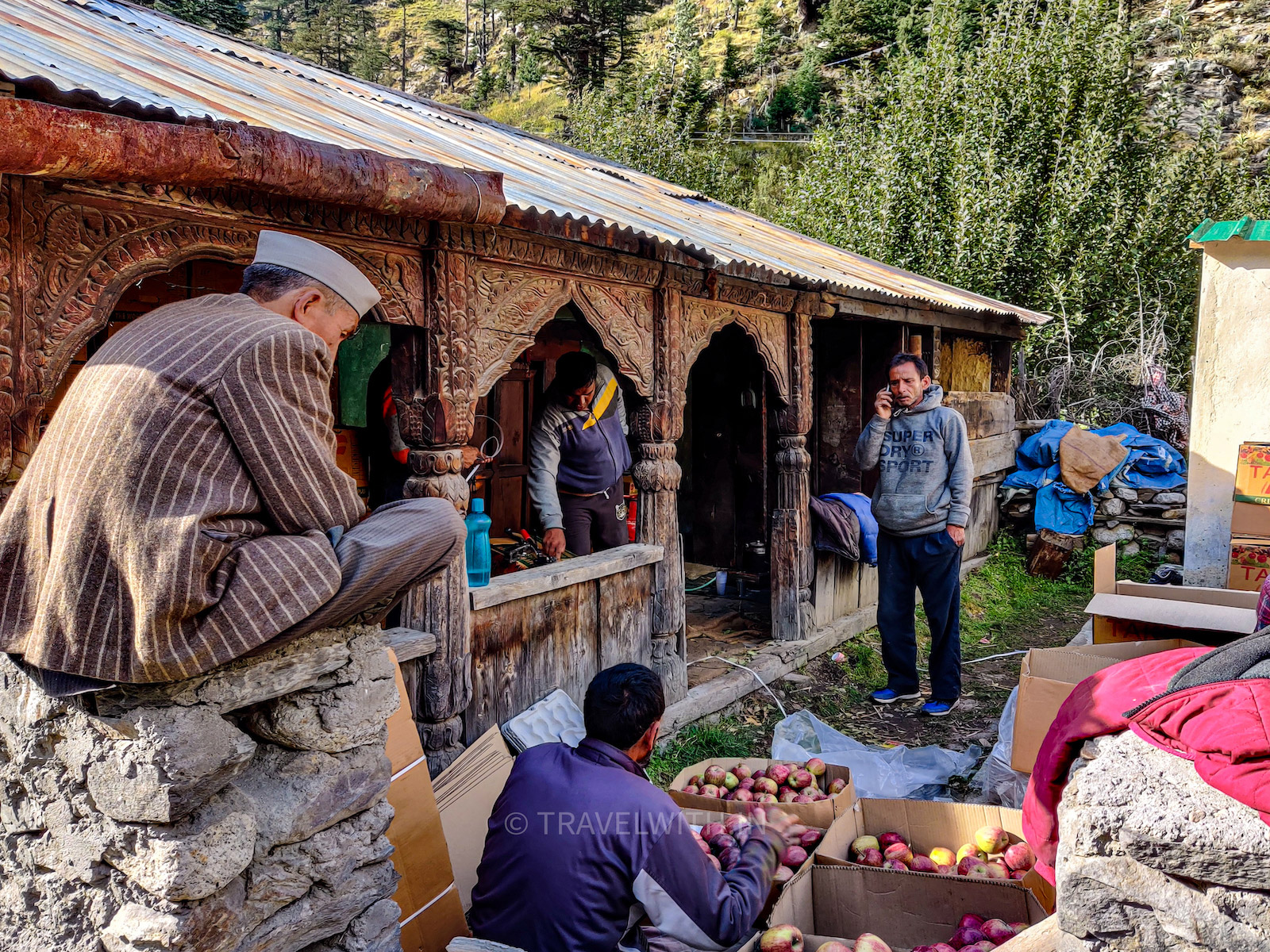
Royal Apple of Harsil
Today, when we talk of Harsil with locals and with people from Delhi and beyond who have recently moved to the Valley, Pahari Wilson does not feature anywhere in the conversations. We came across his story only when we saw a book on him at a friend’s house. His legacy died after his sons lost it all – the massive timber empire, a dozen or more properties including luxurious mansions in Mussoorie and Dehradun and they departed this world without any known surviving descendants.
Today, when we talk of Harsil we know of it as a valley that falls on the way to Gangotri, one of the char dhams and from where the holy Ganga river starts it’s journey. It’s a nice clean blue river up in Gangotri and Harsil but by the time it reaches the plains it loses the blue and becomes a muddy color due to man made pollution.
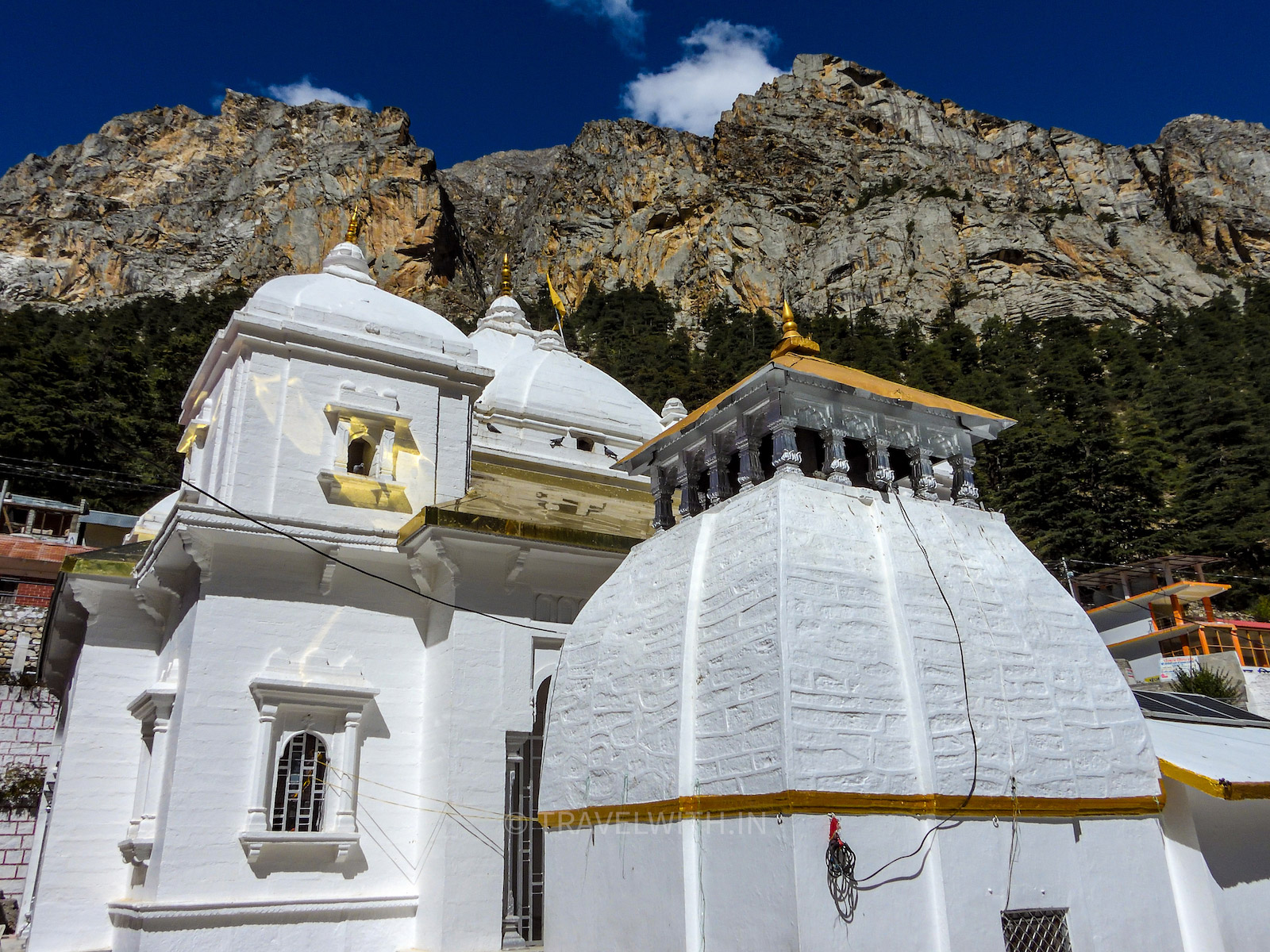
Gangotri dham
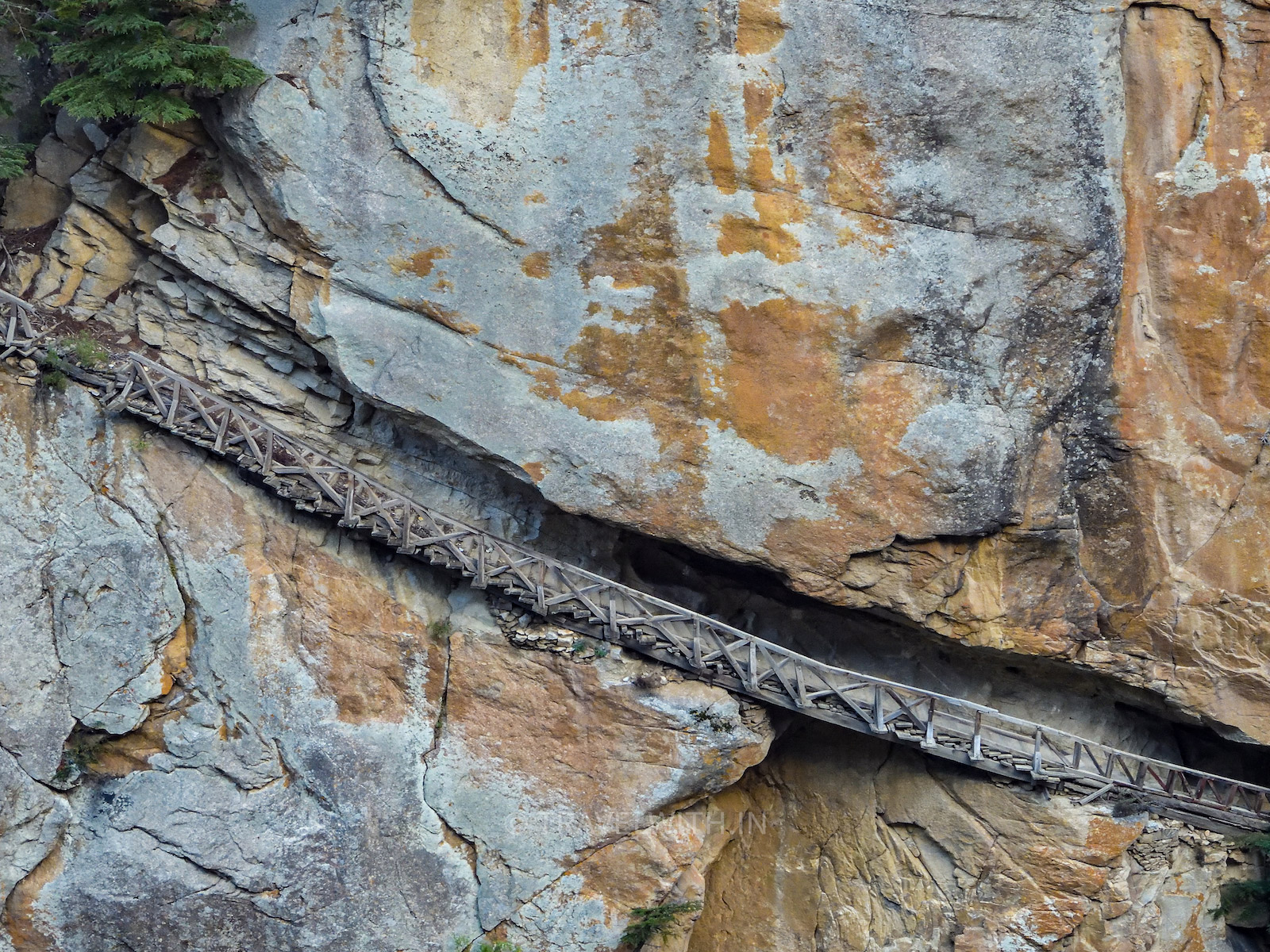
Gartang Gali 150 year old wooden stairway
So why should you visit Harsil? Nevermind, if you’re not interested in the Frederick Wilson story. This valley has several reasons why you may want to visit. Amazing landscape with snow capped mountains, the peaceful blue waters of the Bhagirathi, Nelong Valley, Gangotri for the religious you, traditional Garhwali villages, flora and fauna are some of the reasons that come to our mind.
Harsil is a five hour drive from Mussoorie and seven hours from Dehradun. The road is currently being expanded so expect a few bumpy stretches and traffic jams. According to me the best time to visit is post monsoon (October and November) or spring (March to beginning May). Mid May onwards till July, the valley sees an influx of tourists going for the Char Dham Yatra (Gangotri, Yamunotri, Kedarnath and Badrinath). Post November, it snows so if you’re okay with -10 Celsius and below, then Harsil would be great for you. Harsil and Gangotri are also a base from where several treks commence for the upper Himalayas.
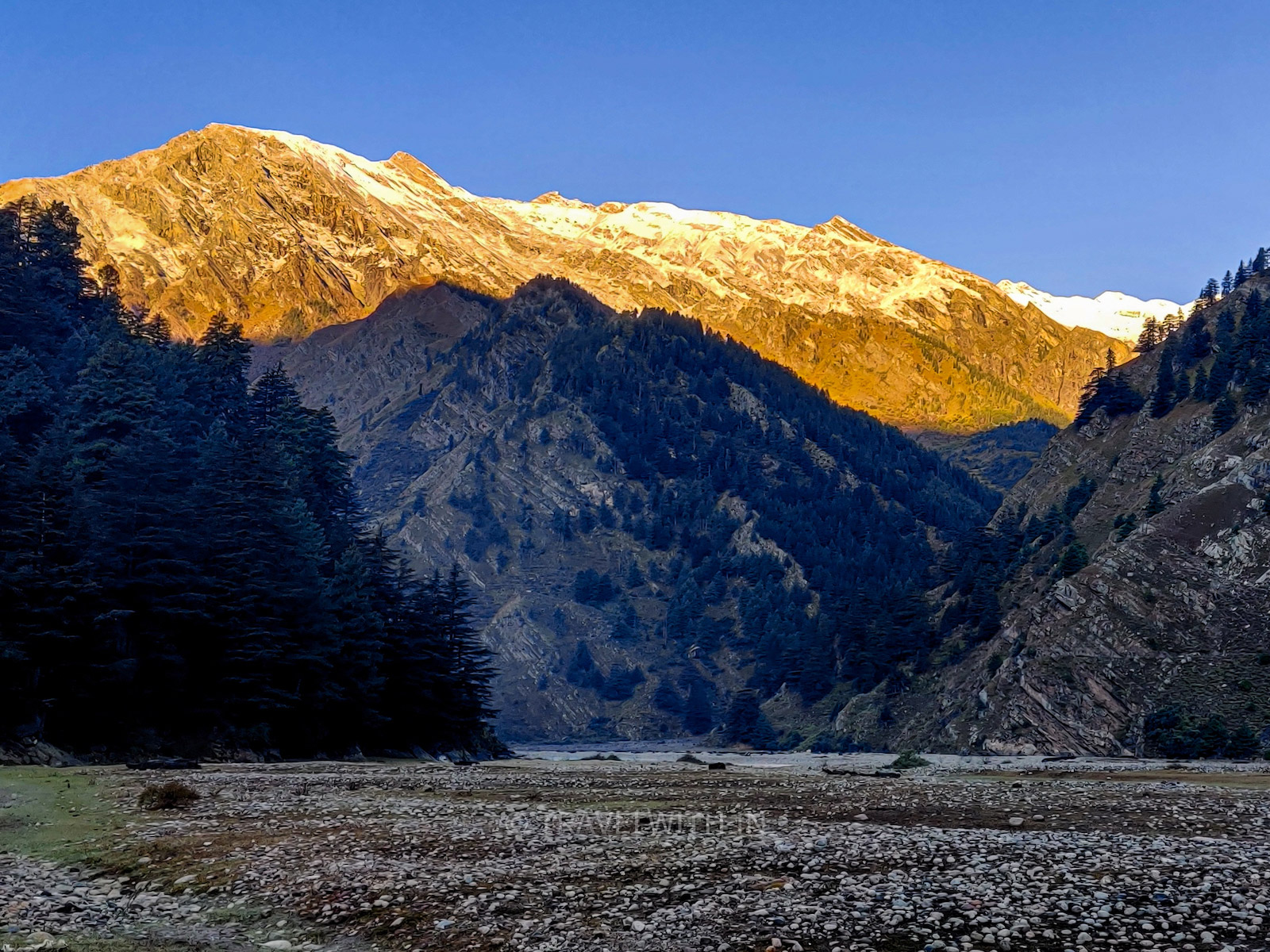
Golden hour on the Bhagirathi Harsil
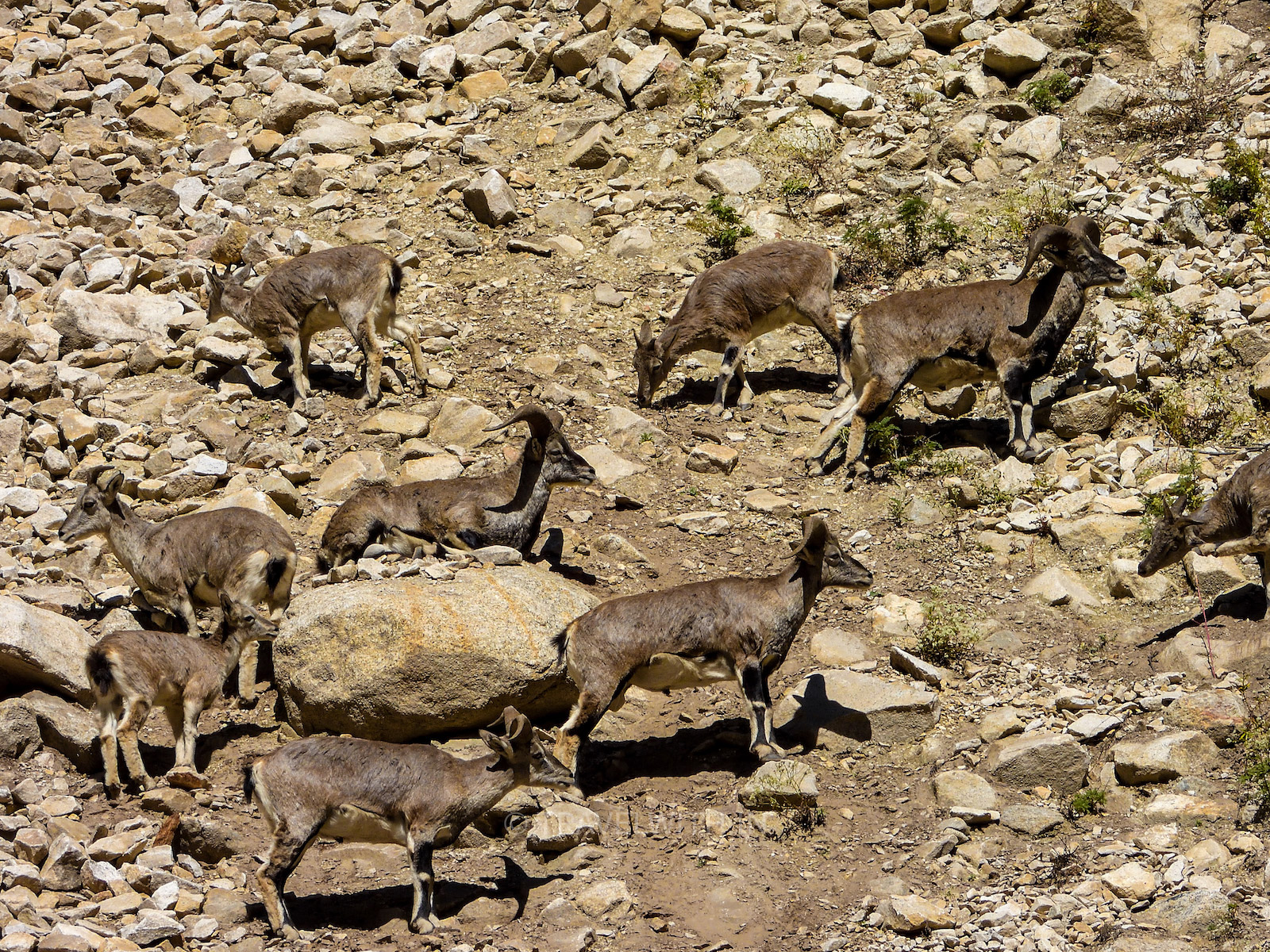
Bharal or Himalayan Blue Sheep
Hotels are few and good quality ones are rare. Finding accommodation during the Yatra season will be tough if you don’t book way before you plan to arrive. Due to the remoteness of the region, do not have high expectations from the hotel you stay in. Service is friendly but not always professional and amenities can be very basic and are impacted when there are road closures and other weather related incidents. You can also take a chopper from Haridwar and Dehradun to visit Gangotri temple. From there Harsil is an hour by road.
Besides Harsil Valley and Gangotri temple you can do a day trip to Nelang Valley (staying the night is not allowed and there are no restaurants or dhabas along the way either). The road to Nelang Valley falls between Harsil and Gangotri and is part of the Gangotri National Park. It is open only for Indians as it is close to the India China border. The area falls under the Indian Army so prior permission from both the Forest Department and the District Magistrate’s office in Uttarkashi is a must although we believe that Indians will soon not require permission to visit certain parts of Nelang Valley. It would be good for you to check with local authorities before going there. Nelang Valley’s high mountains and deep gorges are a sight to behold. The road is narrow (though being expanded currently) and it is advisable to visit Nelang in a vehicle with high ground clearance. When visiting the Valley, please do not take photographs of Army bunkers and installations as that could land you in trouble with the men and women in uniform.
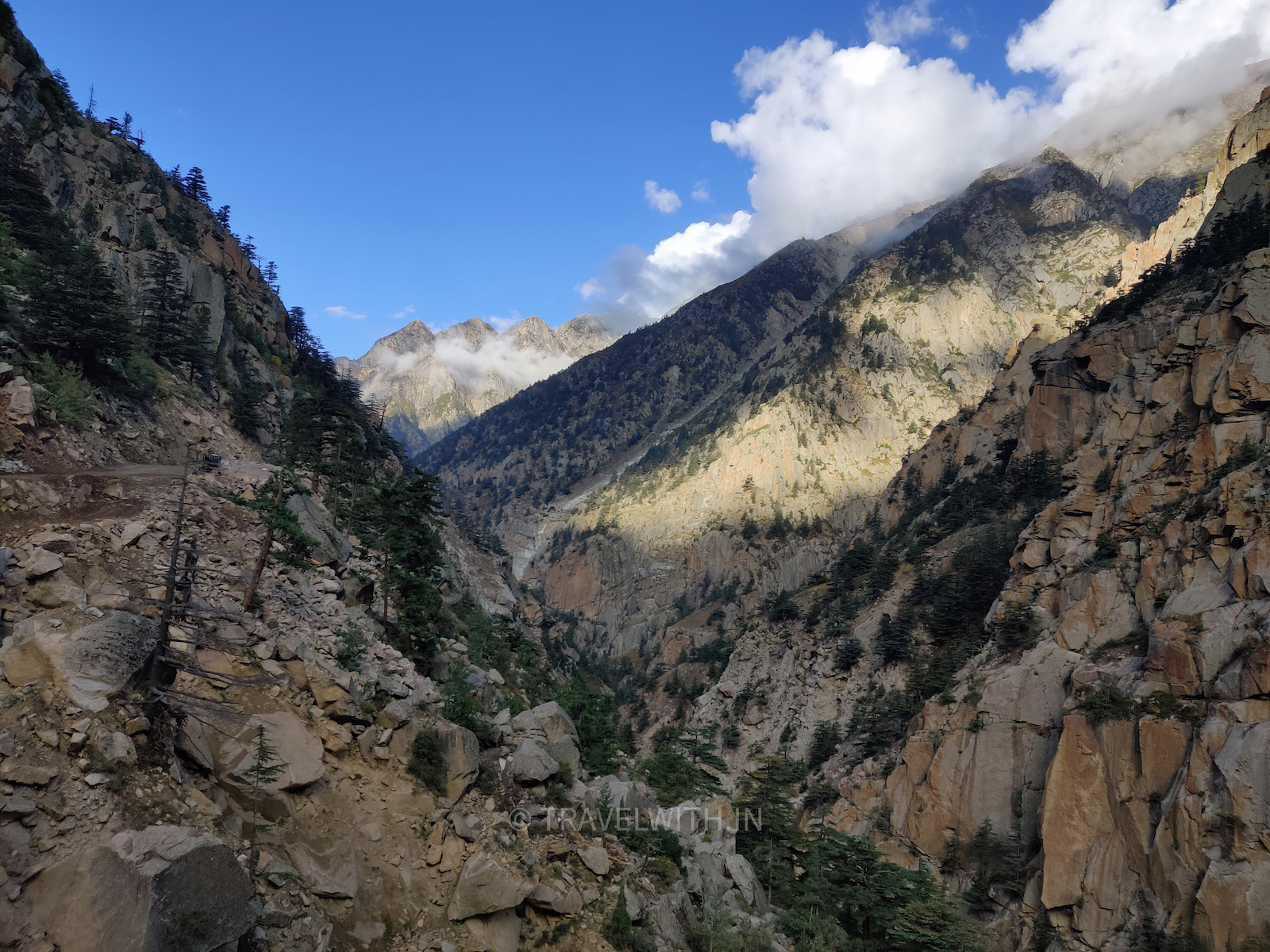
Nelang or Nelong Valley Gangotri National Park
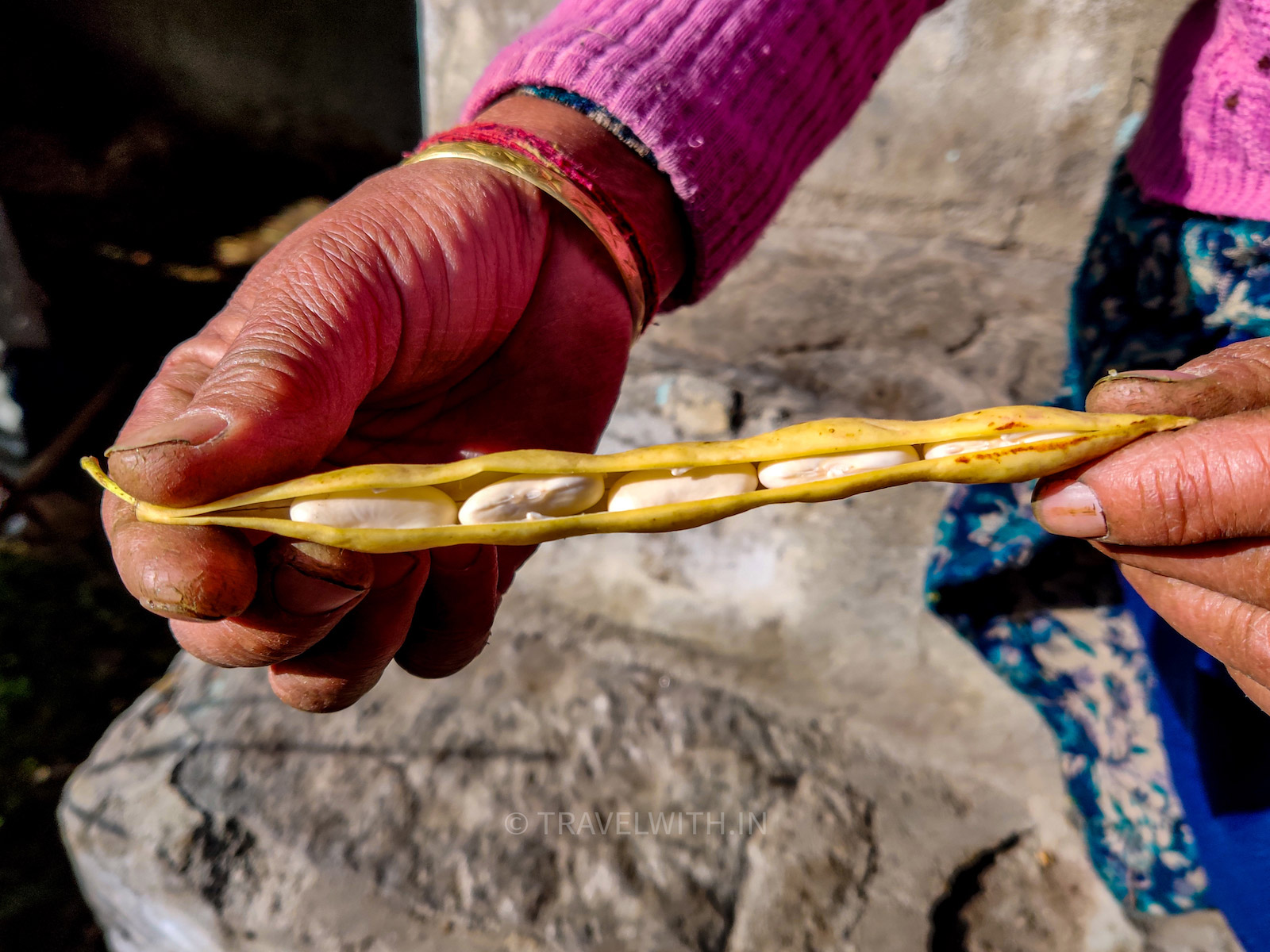
Harsil’s famous white kidney beans or rajma
A visit to the villages of Mukhba and Bagori is also highly recommended. Bagori village is beyond Harsil town and is pedestrian friendly. The local men and women mostly engage in growing and selling apples and kidney beans and also hand-made woollen clothes. The houses are made of intricately carved deodar wood and a walk through the narrow lanes is well worth your time there. Mukhba is at a higher elevation though a car can take you to a certain point from where you have to walk up hill.
Mukhba is the winter seat of the Goddess Ganga and her idol is moved from Gangotri post Diwali (before the first snow fall). The houses are ancient in this village. Mukhba also has the last remaining (and functioning) creation of Frederick Wilson in Harsil Valley. The biggest grandest house in the village was built by Frederick Wilson for his in-laws (Raimata’s family). Raimata’s father’s descendants still live there and are more than happy to let you in and see their ancestral home. Harsil is indeed a hidden gem. Although remote but beautiful, cold but peaceful, basic but worth it, we get it why Frederick Wilson and many after him decided to settle down here. If you need help planning a trip there, please contact us.
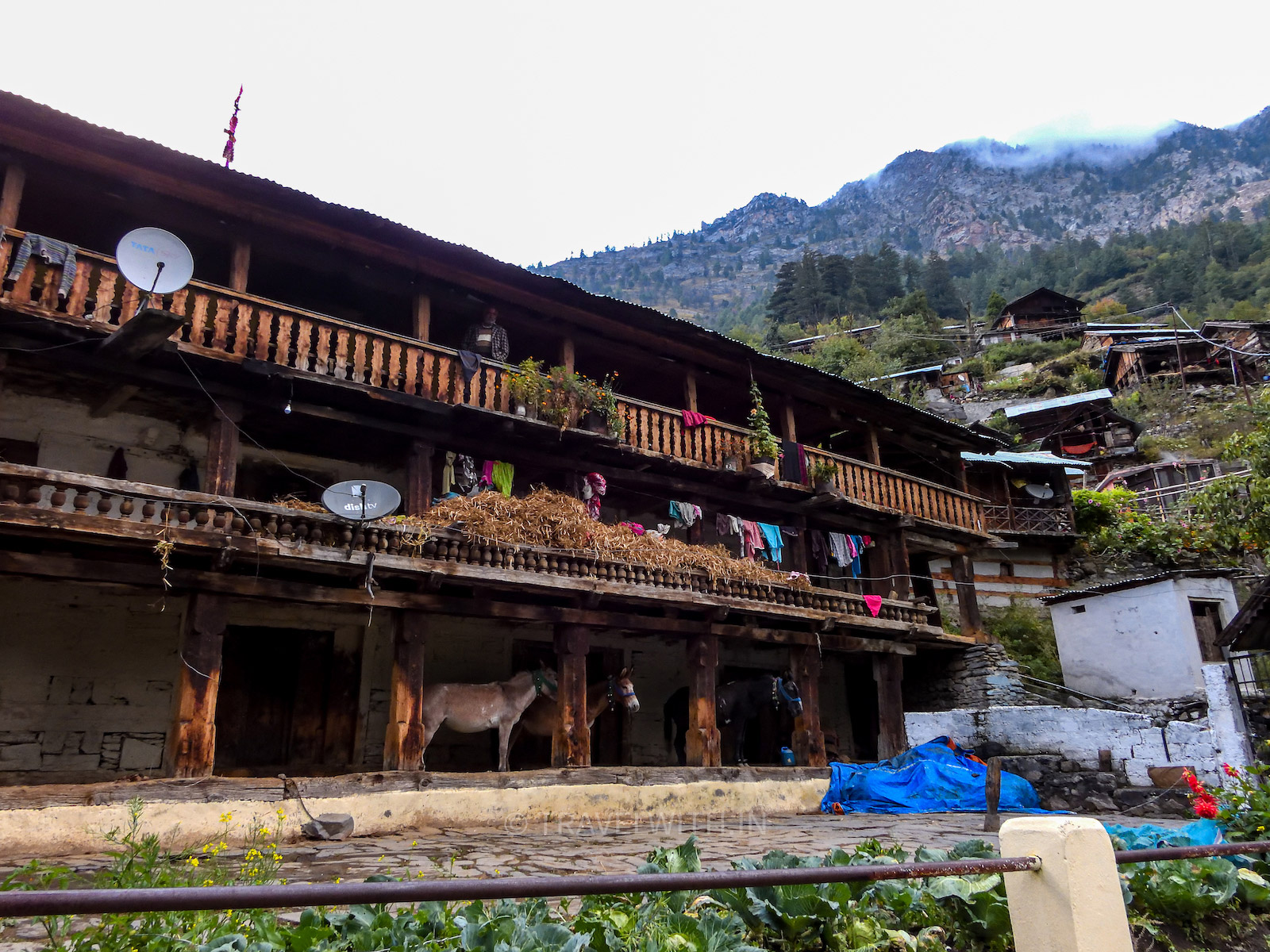
Frederick Wilson’s in-laws descendants house in Mukhba



0 Comments